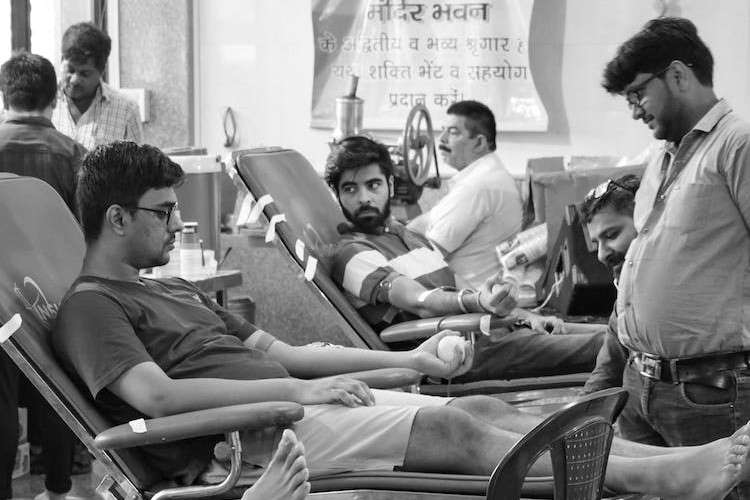India has a growing population which currently stands at more than 1.4 billion. The country faces the challenge of providing quality, cost-efficient, and timely healthcare services to a large population. To address this challenge, the government has introduced several schemes, supported by the flagship programmes, Digital India.
The government looks to promote Digital India healthcare services through the 10 Es — efficiency, quality enhancement, evidence-based rigorous evaluation, empowerment of consumers and patients, encouragement, education, enabling information exchange, extending scope, ethics, and equity. Surveys expect the market size of India’s e-healthcare industry to reach $10.6 billion by 2025. To tap into this opportunity, the government has allowed 100% foreign direct investment (FDI) in hospitals and in AYUSH sector for wellness and medical tourism.
READ | Fossil Fuels to green hydrogen: Harit Sagar eyes sustainable ports
The Union Budget for the current financial year has allocated Rs 89,155 crore for the transformation of the healthcare sector with a focus on tier 2 and tier 3 cities. The budget looks to scale up the National Digital Health Mission, promote innovative technologies in healthcare, develop world-class infrastructure, and support medical research. Collaboration between Indian Institutes of Technology (IIT) and All India Institutes of Medical Sciences (AIIMS) offers courses at various levels to foster innovation in medicine and surgery. Additionally, the Medical Device Policy of 2023 seeks to reduce costs, encourage innovation, and improve scalability in meeting India’s public health objectives.
Digital India and healthcare
As part of the Digital India programme, the government has launched several health initiatives, enabling patients to register for OPD appointments, access laboratory reports, check blood availability, and consult with doctors through telemedicine, all online. E-prescriptions are gaining popularity, allowing individuals to access medications across the country while ensuring the safety and integrity of their medical records. These records can be utilised for research, academic purposes, and insurance approvals.
Mobile apps cater to various healthcare needs, including stress relief, free antenatal services, feedback on patient services, and more. These apps are easily downloadable from platforms like Google Play Store and Apple App Store, providing patients with an overall view of their health status and the ability to schedule follow-up visits.
India has positioned itself as a medical tourism destination, attracting patients from both developed and developing countries. The country ranks 10th out of 46 destinations in the Medical Tourism Index, making it an attractive choice for those seeking top-quality clinical treatments. The government has launched the Heal in India programme, leveraging technology to create a one-step portal that maintains reliable information for foreign individuals seeking treatment and facilitates hassle-free e-medical visas within 24-48 hours.
The Indian government’s response to the Covid-19 crisis in the healthcare sector has been remarkable. The success of apps like Aarogya Setu and COWIN has played a crucial role in Covid management, and the vaccination coverage achieved so far demonstrates how Digital India has transformed healthcare in the country.
The Pradhan Mantri Swasthya Suraksha Yojana (PMSSY) seeks to reduce healthcare inequalities by providing affordable services nationwide. This initiative involves setting up 22 AIIMS institutions and upgrading existing government medical colleges across the country with advanced infrastructure for healthcare services and medical education.
Alongside expanding the number of medical practitioners, it is equally important to develop well-trained technicians, caregivers, attendants, and other supportive healthcare professionals. Future programs like Ayushman Bharat – Pradhan Mantri Jan Arogya Yojana (AB PM-JAY) should be implemented at the grassroots level to reach the maximum number of people. India’s achievements in healthcare infrastructure development today are just the beginning, and there is much more to accomplish in the coming years.
Although availing an ambulance or advanced medical care services in peripheral parts of India remains a challenge, the rising number of Meditech startups in the country indicates its immense potential to transform healthcare services at the universal level, particularly in these areas. By leveraging digital technologies and supportive government policies, India can standardize the existing electronic health records system, promote employment, and ease financing in the healthcare sector.
It will be interesting to see in the coming years how the Indian government shapes its policies and utilizes digital technologies to provide greater accessibility, quality, affordability, equality, and efficient monitoring of citizens through sustainable healthcare services. It is still a challenging task to avail an ambulance on time or advance medical care services especially in the peripheral parts of India.
On the other side, number of Meditech startups in India are rising significantly in the current years indicating that India has enormous potential to transform its healthcare services to the universal level especially in the peripheral parts of India by utilizing digital technologies and supportive government policies. It will standardize the existing electronic health records system, promote employment, and ease financing in the healthcare services.
It would be interesting to watch in the coming years how the Indian government is edging its policy and utilizing its digital technologies to provide greater accessibility, quality, affordability, equality, and efficient monitoring of the citizens through utilisation of sustainable healthcare services.
(Dr Mousam Maiti is with the Department of ENT & Head Neck Surgery, AIIMS, Kalyani. Dr. Moinak Maiti is an author, and independent researcher. Dr. Pravin Jadhav is a faculty at IITRAM, Ahmedabad. The views expressed in this article are of the authors.)

